 September
28
September
28
Tags
English Utopia in the Art of Helen Allingham
 On the 28th of September 1926, Victorian water-colourist and illustrator Helen Allingham, born Helen M. E. Paterson, died in Haslemere, Surrey, England. Her career “was circumscribed by, relied upon, and exceeded accepted norms of landscape painting in the nineteenth century. She painted out-of-doors, for example, a common mode of practice none the less considered suspect for respectable women and further complicated by her role as a mother. While she used watercolour, a medium long associated with women, she operated as a professional and at a time when women’s participation in the arts as such was sharply curbed. Nevertheless, she was represented by one of the most important commercial art galleries in London, which negotiated these issues by insisting upon her respectable femininity and situating her work within the discourses of national identity.” (Gendering Landscape Art, edited by Steven Adams, Anna Gruetzner Robins, Rutgers University Press Issues in Art History, 2001). Indeed, her work helped cement one of the best-loved symbols of Englishness: the cottage, her favourite painting subject, became a leitmotif of both English and colonial life, a picture-postcard reminder of home and the good old fashioned order of things and in an era in which emerging industrialization was destroying the countryside, and the threat of immigration to far-away freshly-established urban establishments in the New World, gave birth to homesickness and a longing for the cosy village life of most people’s childhoods.
On the 28th of September 1926, Victorian water-colourist and illustrator Helen Allingham, born Helen M. E. Paterson, died in Haslemere, Surrey, England. Her career “was circumscribed by, relied upon, and exceeded accepted norms of landscape painting in the nineteenth century. She painted out-of-doors, for example, a common mode of practice none the less considered suspect for respectable women and further complicated by her role as a mother. While she used watercolour, a medium long associated with women, she operated as a professional and at a time when women’s participation in the arts as such was sharply curbed. Nevertheless, she was represented by one of the most important commercial art galleries in London, which negotiated these issues by insisting upon her respectable femininity and situating her work within the discourses of national identity.” (Gendering Landscape Art, edited by Steven Adams, Anna Gruetzner Robins, Rutgers University Press Issues in Art History, 2001). Indeed, her work helped cement one of the best-loved symbols of Englishness: the cottage, her favourite painting subject, became a leitmotif of both English and colonial life, a picture-postcard reminder of home and the good old fashioned order of things and in an era in which emerging industrialization was destroying the countryside, and the threat of immigration to far-away freshly-established urban establishments in the New World, gave birth to homesickness and a longing for the cosy village life of most people’s childhoods.
Pamela Gerrish Nunn quotes the poet Robert Browning who articulated the homesickness of his exiled contemporaries: “Oh! to be in England / Now that April’s there! / All will be gay when noontide wakes anew / The Buttercups, the little children’s dower, /  Far brighter than this gaudy melon flower!” and John Keats: “Happy is England! I could be content / To see no other verdure than its own, / To feel no other breezes than are blown / Through its tall woods, with high romances blent.” In times like this, The Cottage Homes of England , published in 1909 and based on Allingham ‘s drawings, was mostly welcomed as it suggested the key image of the English cottage as a unifier of national identity. Allingham was enraptured by the beautiful countryside around her, the picturesque farmhouses and cottages of Surrey and Sussex as well as rural scenes in other parts of the country – Middlesex, Kent, the Isle of Wight and the West Country, which she painted with an almost kitsch-like sentimentality and chromatic richness.
Far brighter than this gaudy melon flower!” and John Keats: “Happy is England! I could be content / To see no other verdure than its own, / To feel no other breezes than are blown / Through its tall woods, with high romances blent.” In times like this, The Cottage Homes of England , published in 1909 and based on Allingham ‘s drawings, was mostly welcomed as it suggested the key image of the English cottage as a unifier of national identity. Allingham was enraptured by the beautiful countryside around her, the picturesque farmhouses and cottages of Surrey and Sussex as well as rural scenes in other parts of the country – Middlesex, Kent, the Isle of Wight and the West Country, which she painted with an almost kitsch-like sentimentality and chromatic richness.
Her career is significant though, as it presents one of those rare examples in the history of art in which the artist’s gender helped her progress professionally. Allingham’s femaleness and the feminity of her pictures reinforced the idea of the maternal draw of iconic English country life: “In Allingham ‘s work, the mother’s voice called the viewer home to the place of comfort she offered to worker and shirker, traveller and stay-at-home, young and old, who were promised a return back to the land, back to innocence, and back to the womb. As a new century unfurled and the mother of the nation passed on (Queen Victoria died in January 1901 ), Allingham was instated as a comforting female voice speaking reassuringly to the nation of continuity and identity. Indeed, it was easy to see the mother and housewife as the lodestar of Allingham’s village life.
In her work, men and boys, invisible because they were working beyond the pictorial space in the fields, complemented, as Ruskin dictated, the work that Allingham ‘s female characters carried on (washing, shopping, knitting, gardening, and  childcare). More problematic meanings were not found in Allingham ‘s portraits. Her mothers and grandmothers were not read as the captive wives exposed much later by twentieth-century feminism, isolated at the cottage door or garden gate, lonely women greeting with pathetic relief a passer-by, a visitor, or a child on an errand. The paucity of male figures in these scenes was not seen as endorsing the unreliability of men but as underlining the safeness and calm of the world Allingham offered the viewer, a domain where women, children, and the elderly were unsupervised but not unruly, clearly at ease.” (Pamela Gerrish Nunn, ‘The Cottage Paradise, Victorian Review, Vol. 36, No. 1, Spring 2010). The reading of Allingham’s art thus very much varies depending on contextualisation; above all, though, she was the right woman in the right place at just the right time in history and she used the tools available to make a success of her career.
childcare). More problematic meanings were not found in Allingham ‘s portraits. Her mothers and grandmothers were not read as the captive wives exposed much later by twentieth-century feminism, isolated at the cottage door or garden gate, lonely women greeting with pathetic relief a passer-by, a visitor, or a child on an errand. The paucity of male figures in these scenes was not seen as endorsing the unreliability of men but as underlining the safeness and calm of the world Allingham offered the viewer, a domain where women, children, and the elderly were unsupervised but not unruly, clearly at ease.” (Pamela Gerrish Nunn, ‘The Cottage Paradise, Victorian Review, Vol. 36, No. 1, Spring 2010). The reading of Allingham’s art thus very much varies depending on contextualisation; above all, though, she was the right woman in the right place at just the right time in history and she used the tools available to make a success of her career.
Feature Image: Haslemere, Surrey
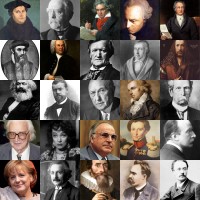


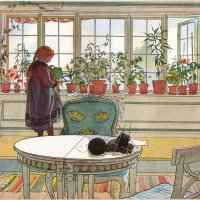
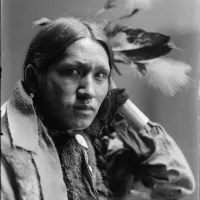
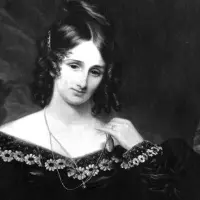
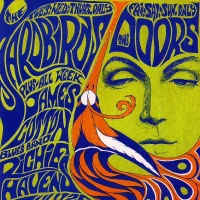
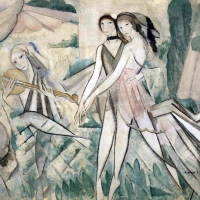

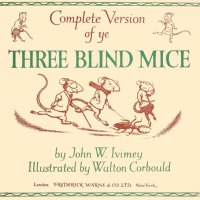
Reblogged this on Lenora's Culture Center and Foray into History.
LikeLike
Pingback: English Utopia in the Art of Helen Allingham | A R T L▼R K | First Night Design
Reblogged this on texthistory and commented:
A rarity – a professional female artist. lovely.
LikeLike
Pingback: English Utopia in the Art of Helen Allingham | A R T L▼R K | ' Ace Friends News '
Very interesting! I didn’t know her, even if I studied art history, but such artist often don’t are mentioned in art books or there is only a sentence or two about them.
Anyway I really like her pictures: so soft and calm, they give me the idea of “home”.
Thanks for sharing this!
LikeLike